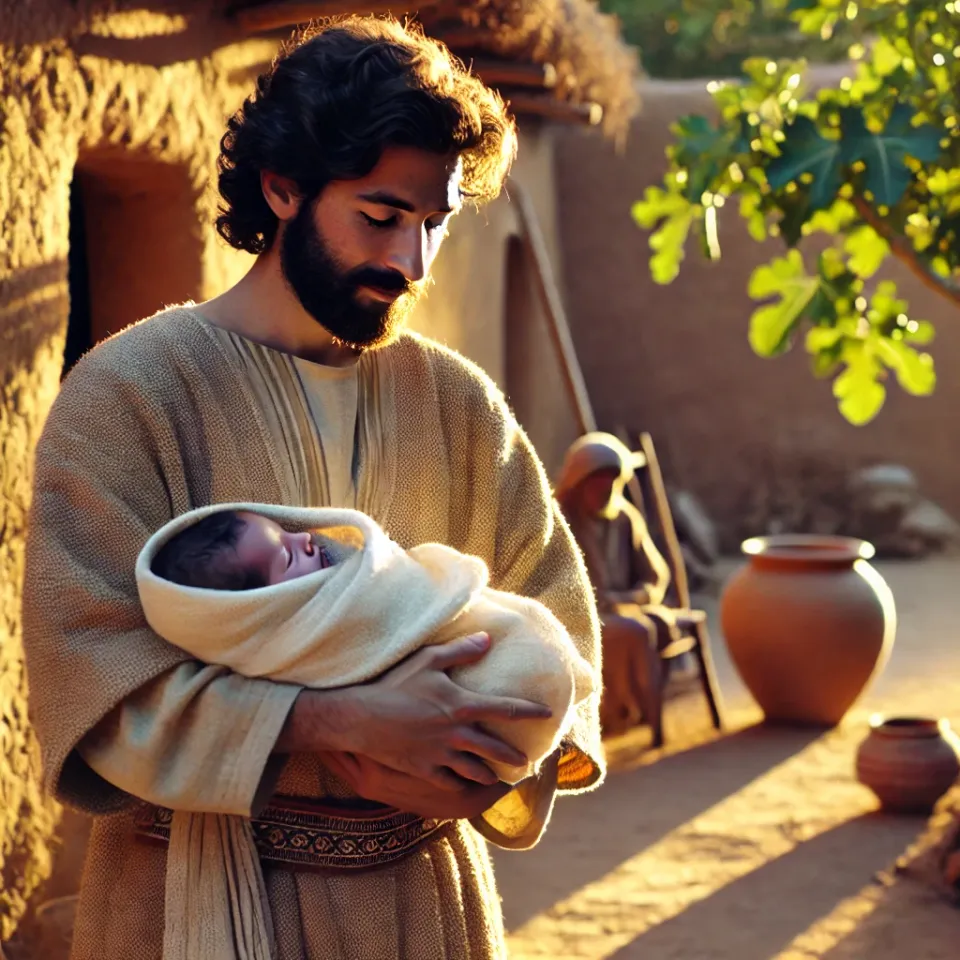Who’s Your Daddy? The Irreconcilable Geneaologies of Jesus in Matthew and Luke

The genealogies of Jesus in Matthew and Luke are quite the biblical trainwreck—bad news for anyone who insists the Bible "means exactly what it says." Clearly, Matthew and Luke didn't bother to check each other's homework before handing in their stories.
Purpose of the Genealogies
First, let's state the obvious: both genealogies trace Jesus’s lineage through Joseph, the husband of Mary. But wait—doesn't every nativity scene remind us Joseph wasn't even the biological father? Awkward. Nevertheless, the New Testament keeps calling Jesus "Joseph’s son" (Luke 4:22 NRSVUE), so the idea was clearly to establish Jesus as legally tied to David’s throne, even if biology wasn't cooperating.
Differences in Lineage
Matthew confidently parades Jesus's royal heritage through Solomon, David’s star-child, while Luke decides to drag us through the lesser-known Nathan, another one of David’s seemingly endless progeny. And because they couldn't make things too simple, they flat-out contradict each other about Joseph’s father:
Matthew says Joseph’s dad was Jacob: "and Jacob the father of Joseph" (Matthew 1:16 NRSVUE).
Luke casually disagrees, claiming it was Heli: "He was the son (as was thought) of Joseph son of Heli" (Luke 3:23 NRSVUE).
Biblical scholar Bart Ehrman neatly sums it up: "The two genealogies simply cannot be reconciled" (Ehrman 84). Understatement of the millennium.

Apologetic Responses and Their Shortcomings
Naturally, apologists have come up with some creative (read: desperate) ways to patch these glaring issues. Here are their greatest hits.
Mary's Lineage Hypothesis
Some apologists claim Luke actually presents Mary's lineage, cleverly making Heli Mary's father instead of Joseph’s. Sounds nice until you realize ancient Hebrew genealogies were obsessively patrilineal. If a woman married into another tribe, she became a member of that tribe, as were any children born of that union. Sure, women occasionally pop up parenthetically, but lineage was strictly a men-only club. Tracing Jewishness through the mother? That's a rabbinic twist that didn't even exist until centuries after the Bible was finalized (Johnson 71).
To add insult to injury, this theory of Mary's lineage didn't even appear until the fifth century CE, thanks to a guy named Pseudo-Hilary, and then resurfaced again around 1498 with Annius of Viterbo. Basically, it's a theory someone cooked up because the text stubbornly refused to cooperate.
Levirate Marriage Hypothesis
Then there’s the levirate marriage angle, which goes like this: if a guy dies childless, his brother marries the widow to produce an heir in the dead brother’s name. Apologists suggest Jacob and Heli were half-brothers in this scenario, conveniently making Joseph legally related to one and biologically related to the other. Nice story, but here's the catch: Sextus Julius Africanus invented this in the early third century CE without a shred of biblical support (Brown 94). It’s basically fanfiction from two centuries after the fact. It was a post-hoc invention developed to pretend that the two stories agreed, even when the texts insisted they did not.
But What Does the Bible Say?
I would be remiss if I didn't point out the obvious. The people who make these unsubstantiated apologetic explanations are biblical literalists. They love to say things like, "The Bible says what it means, and means what it says." But note that in these two most commonly used apologetic equivalents of clutching at straws, there is no support in the text itself. In order to make the two versions agree, apologists have to create fictional stories without any factual basis and insert it into the text hoping nobody will notice.
Guess what? We noticed.
Both lineages explicitly state that they are tracing the line of Joseph.
Numerical Symbolism and Errors in Matthew
Matthew apparently loved numerology, neatly grouping Jesus’s ancestors into three perfect sets of fourteen (Matthew 1:17 NRSVUE), probably because the Hebrew name "David" equals fourteen. Clever, right? Except Matthew screws up counting, ending up with only thirteen generations in the final set (Matthew 1:12-16 NRSVUE).
And if that wasn’t bad enough, Matthew casually omits a few inconvenient kings. He says "Jehoram was the father of Uzziah" (Matthew 1:8). But in the Old Testament we are told that Jehoram was the father of Ahaziah, who was the father of Joash, who was the father of Amaziah, who was the father of Uzziah. He claims that Jehoram was the father of Uzziah when he was actually his great-great-grandfather (1 Chronicles 3:11-12; 2 Kings 8:25, 11:2, 12:21).
Maybe nobody will notice.
Guess what? We noticed.
Again.
Oops.
Apparently, symbolic numbers trump historical accuracy.
Generation Counts between David and Joseph
For an extra dose of confusion, Matthew lists 27 generations between David and Joseph, while Luke tallies a whopping 42. Did these authors even read the same script? (Johnson 69).
Theological Implications
Let’s face it—these genealogies were less about historical accuracy and more about giving Jesus the proper messianic pedigree. Matthew and Luke wrote their genealogies independently around the same period without comparing notes, making it obvious that these lineages were basically theological fan fiction.
Conclusion
In the end, these genealogies are theological, not historical. Literalists insisting on perfect biblical consistency have their work cut out for them—or perhaps they're just ignoring the contradictions altogether. Acknowledging these genealogies as theological storytelling at least makes the inconsistencies easier to digest.
Works Cited
Brown, Raymond E. The Birth of the Messiah: A Commentary on the Infancy Narratives in Matthew and Luke. Yale University Press, 1999.
Ehrman, Bart D. Jesus, Interrupted: Revealing the Hidden Contradictions in the Bible (And Why We Don’t Know About Them). HarperOne, 2009.
France, R. T. The Gospel of Matthew. The New International Commentary on the New Testament, Eerdmans, 2007.
Johnson, Luke Timothy. The Gospel of Luke. Sacra Pagina Series, Liturgical Press, 2006.
Holy Bible, New Revised Standard Version Updated Edition (NRSVUE). National Council of the Churches of Christ in the USA, 2021.


Comments ()